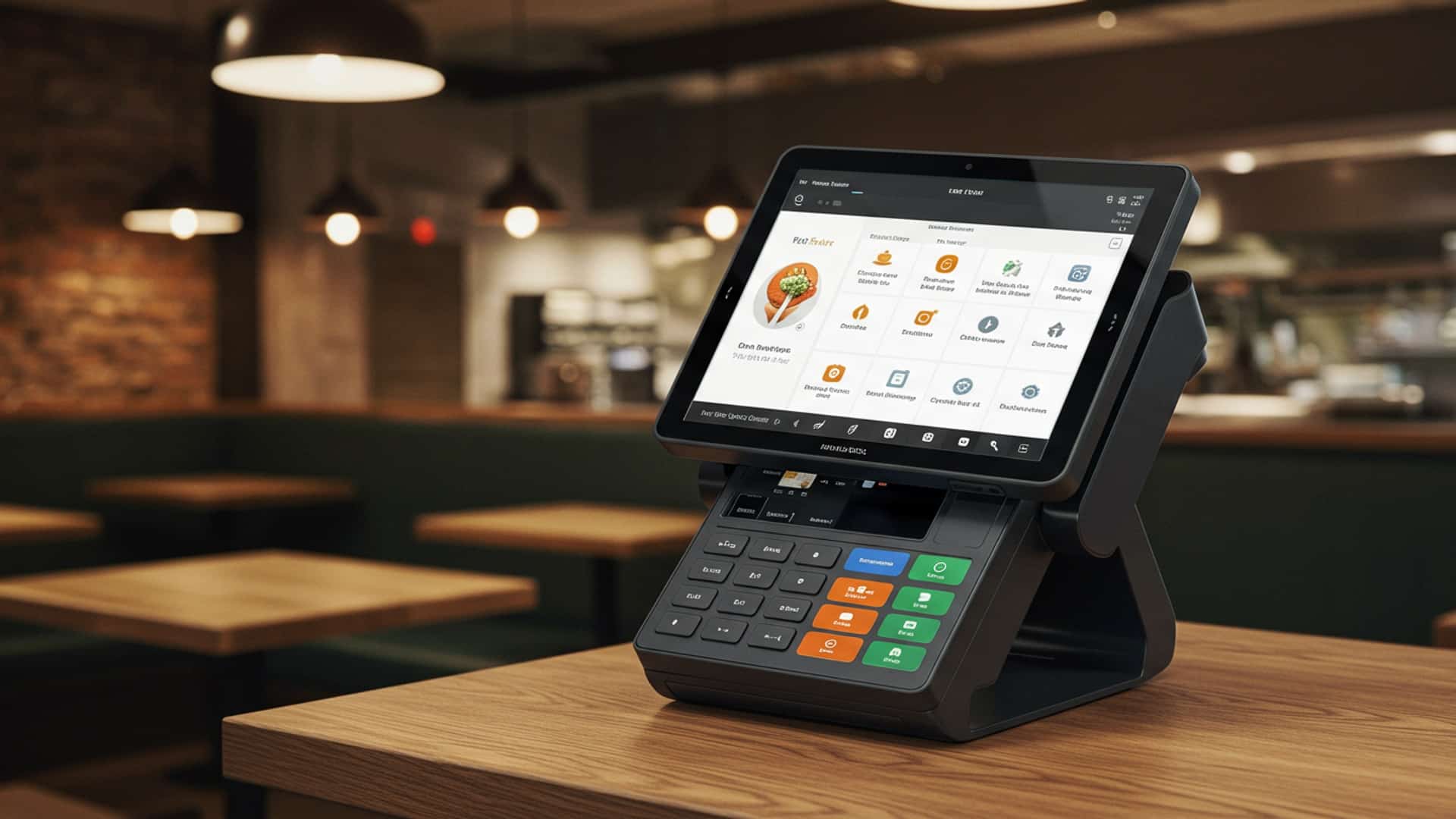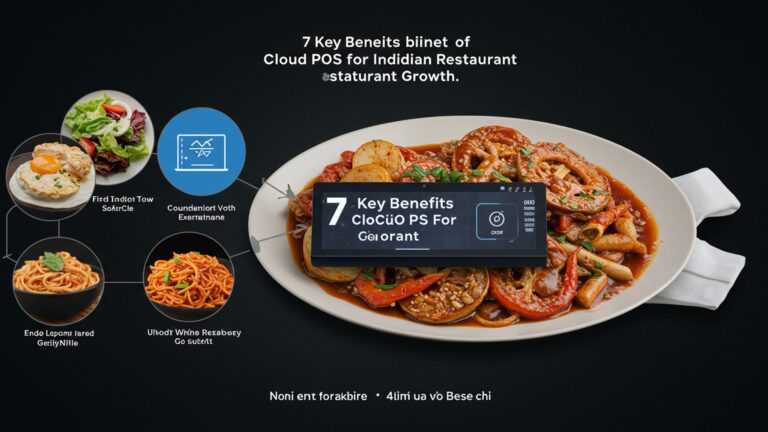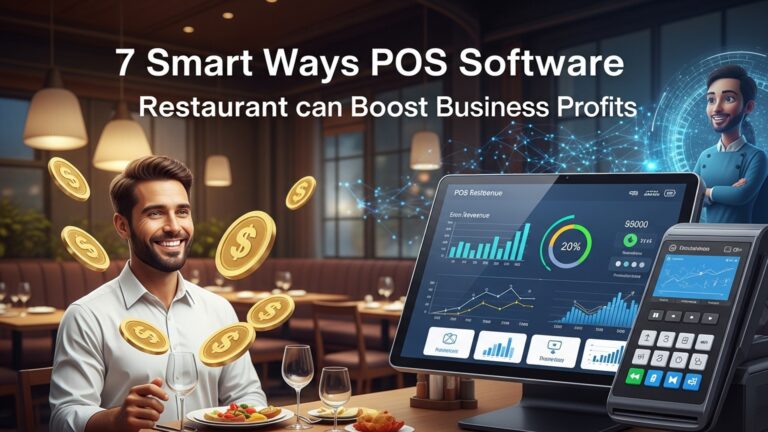7 Essential Features Every Restaurant Needs in a POS System
In today’s hyper-competitive culinary landscape, a basic cash register is an outdated relic; modern restaurants, from fast-casual chains to upscale dining, now require Restaurant POS software that functions as their operational backbone. Beyond merely processing payments, a truly robust system integrates critical functions like real-time inventory management to prevent waste and optimize ingredient costs, seamless online ordering with third-party delivery platforms. comprehensive table management for peak service efficiency. The recent acceleration towards cloud-based systems and QR code ordering highlights the urgent need for adaptive technology that not only elevates the guest experience through personalized order flows but also provides actionable sales analytics to drive profitability and sustained growth.

Seamless Order Management and Customization
At the heart of any bustling eatery is the ability to take orders quickly and accurately. A top-tier Restaurant POS software system excels here, transforming what could be a chaotic process into a smooth operation. This feature goes beyond simply punching in items; it encompasses a robust suite of tools designed to handle every permutation of a customer’s request.
- Intuitive Interface
- Customization and Modifiers
- Course Management
- Table Management
The system should have an easy-to-navigate interface that allows staff, even new hires, to quickly find menu items, apply modifiers. send orders to the kitchen or bar. Think about how a busy Friday night demands speed – a clunky interface slows everything down.
Restaurants thrive on personalization. Customers often want their burger medium-rare, no pickles, extra cheese. a side of sweet potato fries. Your POS needs to handle these complex orders effortlessly. This includes predefined modifiers (e. g. , “add bacon,” “no onion”), as well as the ability for servers to add custom notes for the kitchen. Imagine a diner ordering a complex dish; the POS system should ensure every detail, from cooking temperature to allergy alerts, is clearly communicated to the kitchen staff, preventing errors and improving customer satisfaction.
For fine dining or multi-course meals, the ability to “fire” courses at the right time is critical. An advanced Restaurant POS software allows servers to hold courses and release them when the kitchen is ready, ensuring dishes arrive at the table fresh and in the correct sequence.
Visual floor plans within the POS system allow staff to see which tables are occupied, clean, or waiting for service. They can assign servers to tables, split or combine tables. track the dining progress of each party. This improves efficiency and ensures no customer is left waiting too long.
Robust Inventory Management
For many restaurants, inventory is the largest controllable cost. Effective inventory management through your Restaurant POS software is not just about counting ingredients; it’s about optimizing purchasing, reducing waste. ultimately, boosting profitability. This feature is a game-changer for maintaining consistent food costs and preventing stockouts.
- Real-time Tracking
- Recipe Management
- Vendor Management & Ordering
- Waste Tracking
A sophisticated POS system tracks ingredients as they are used. When a dish is sold, the system automatically deducts the corresponding ingredients from your inventory. For example, if you sell a “Signature Burger,” the system reduces your stock of buns, ground beef, lettuce, tomatoes. cheese. This real-time data is invaluable for knowing exactly what you have on hand.
Inputting your recipes into the POS allows for precise portion control and cost analysis. You can see the exact cost of each dish, helping you price your menu strategically. This also ensures consistency across all servings, regardless of who is cooking.
The system can manage vendor insights, track purchase orders. even suggest reorder points based on sales data and lead times. This automates much of the ordering process, saving hours of manual work and ensuring you never run out of critical ingredients. Consider a scenario where your popular avocado toast is flying off the shelves; the POS can alert you to order more avocados before you run out, preventing lost sales.
Easily record spoiled items, dropped dishes, or other forms of waste. This data helps identify areas where you can improve operations and reduce costs. For instance, if you notice a consistent pattern of a certain ingredient spoiling quickly, you might adjust your ordering quantities or storage methods.
Secure and Flexible Payment Processing
In today’s diverse payment landscape, a modern Restaurant POS software must offer secure, fast. flexible payment options. This feature is critical not only for customer convenience but also for protecting sensitive financial data and ensuring compliance with industry standards.
- Multiple Payment Types
- EMV and Contactless Payments
- Payment Security (PCI DSS Compliance)
- Offline Mode
Customers expect to pay with credit cards, debit cards, mobile payments (like Apple Pay, Google Pay). gift cards. Your POS system should seamlessly integrate with various payment processors to accept all these methods. The ability to split checks among multiple diners using different payment methods is also a must-have.
EMV chip cards and contactless “tap-to-pay” options are now standard for security and speed. Your POS hardware and software must support these technologies to protect against fraud and provide a quick checkout experience. According to Visa, EMV chip technology has significantly reduced counterfeit fraud at chip-enabled merchants.
Handling credit card data requires strict adherence to Payment Card Industry Data Security Standard (PCI DSS). A robust Restaurant POS software system is built with security in mind, encrypting data and minimizing the risk of breaches. This protects both your business and your customers’ financial insights.
Here’s a quick comparison of common payment processing setups:
| Feature | Integrated POS Payment Processing | Separate Terminal (Non-Integrated) |
|---|---|---|
| Data Flow | Sales data automatically sent from POS to payment processor. | Manual entry of transaction amount into a separate terminal. |
| Speed | Faster, fewer steps. | Slower, requires double entry. |
| Error Rate | Reduced human error (e. g. , miskeyed amounts). | Higher risk of human error. |
| Reconciliation | Automated and seamless. | Manual matching of POS receipts to terminal reports. |
| Security | Often includes advanced encryption and tokenization. | Terminal provides its own security. data transfer can be less secure if not integrated. |
| Cost | Can be part of a bundled POS package; transparent processing fees. | Separate hardware and processing fees; potential for hidden costs. |
Internet outages happen. A good POS system should have an offline mode that allows you to continue taking orders and processing payments (which sync once connectivity is restored), preventing business disruption.
Comprehensive Reporting and Analytics
Data is the new currency. a powerful Restaurant POS software acts as your financial and operational intelligence hub. This feature provides actionable insights that are crucial for making informed business decisions, identifying trends. optimizing performance.
- Sales Reports
- Labor Reports
- Inventory & Cost Reports
- Customer Data Reports
- Customizable Dashboards
- Real-World Application
Beyond just total sales, detailed reports can break down sales by item, category, server, time of day. even table. This helps you comprehend your best-selling dishes, peak hours. top-performing staff. For example, if your POS data shows that your lunch rush on Tuesdays is consistently slow, you might consider a special promotion or adjust staffing.
Track employee hours, clock-in/out times. labor costs. This data is essential for managing payroll and optimizing staffing levels to match demand, preventing overstaffing during slow periods and understaffing during peak times.
As mentioned, integrating sales with inventory data gives you real-time food costs, helping you identify waste, optimize purchasing. manage vendor relationships. You can see your profit margins per dish and adjust pricing or recipes accordingly.
If integrated with a CRM or loyalty program, you can track customer preferences, purchase history. loyalty points. This allows for targeted marketing and personalized service.
Modern POS systems offer customizable dashboards where owners and managers can see key performance indicators (KPIs) at a glance, such as daily sales, average check size. labor costs, without having to dig through multiple reports.
A restaurant owner used their POS analytics to discover that a particular appetizer consistently sold well but had a very low-profit margin due to ingredient costs. By slightly adjusting the recipe with a more cost-effective alternative that didn’t compromise taste, they significantly improved profitability on that item without impacting customer satisfaction. This kind of insight is only possible with robust reporting.
Integrated Customer Relationship Management (CRM) and Loyalty Programs
Building a loyal customer base is paramount for long-term success. A Restaurant POS software that incorporates CRM and loyalty features helps you grasp your customers better, reward their patronage. encourage repeat business. This goes beyond just taking orders; it’s about building relationships.
- Customer Profiles
- Loyalty Programs
- Targeted Marketing
- Feedback Management
The POS can store customer data, including contact details, order history, dietary preferences. special occasions (like birthdays). This allows for personalized service and targeted marketing. Imagine a server knowing a regular customer’s favorite drink before they even order it.
Implement points-based systems, tiered rewards, or special discounts for frequent visitors. Customers earn points with each purchase that can be redeemed for future discounts or free items. This incentivizes repeat visits and fosters a sense of appreciation. For instance, “Buy 9 coffees, get the 10th free” can be easily managed through the POS, eliminating physical punch cards.
Use the collected customer data to send personalized promotions, birthday offers, or updates on new menu items. For example, if a customer frequently orders vegetarian dishes, you can send them an email promoting your new plant-based options. This direct, relevant communication is far more effective than generic advertising.
Some advanced POS systems allow for direct customer feedback collection, integrating with review platforms or internal surveys. This provides valuable insights into customer satisfaction and areas for improvement.
Efficient Employee Management
Managing staff effectively is crucial for any restaurant’s smooth operation. A comprehensive Restaurant POS software system streamlines various employee-related tasks, from time tracking to performance monitoring, ensuring your team is organized, accountable. productive.
- Time & Attendance Tracking
- Permission Levels & Role-Based Access
- Performance Tracking
- Tip Management
- Scheduling Integration
Employees can clock in and out directly through the POS terminal, providing accurate records for payroll. This eliminates manual time cards, reduces errors. helps prevent “buddy punching” (where one employee clocks in for another). The system can also enforce breaks and prevent early clock-ins, saving on labor costs.
Not all employees need access to every feature of the POS. The system should allow you to set different permission levels for various roles (e. g. , server, bartender, manager, owner). For example, a server might only be able to take orders and process payments, while a manager can access inventory, reports. employee schedules. This enhances security and prevents unauthorized changes.
Monitor individual server performance, such as average check size, sales per hour. tip totals. This data can be used for coaching, incentives. identifying training needs. A manager might notice that a particular server consistently has lower average check sizes and can then offer targeted training on upselling techniques.
For establishments where tips are pooled or distributed, the POS can help manage and calculate tip allocations accurately, simplifying payroll and ensuring fair distribution among staff.
While not always a core POS feature, many modern systems integrate with third-party scheduling software or offer basic scheduling tools, allowing managers to create and distribute schedules efficiently, taking into account employee availability and labor cost projections.
Seamless Online Ordering and Delivery Integration
In the digital age, online ordering and delivery have become non-negotiable for many restaurants. A modern Restaurant POS software must seamlessly integrate with these channels, ensuring that orders flow smoothly from online platforms directly to your kitchen, without manual intervention.
- Direct Online Ordering Platform
- Third-Party Delivery Service Integration
- Menu Synchronization
- Delivery Management
- Actionable Takeaway
Many POS systems offer a built-in or integrated online ordering portal that can be customized with your restaurant’s branding. This allows customers to order directly from your website, avoiding third-party commission fees.
For restaurants using platforms like Uber Eats, DoorDash, or Grubhub, direct integration with the POS is crucial. Instead of requiring staff to manually re-enter orders from a tablet into the POS, the orders automatically appear in your kitchen display system (KDS) or on your POS terminal. This reduces errors, saves time. speeds up order fulfillment.
Consider the workflow with and without integration:
| Aspect | Integrated POS & Delivery Platforms | Non-Integrated (Manual Entry) |
|---|---|---|
| Order Flow | Online order goes directly to POS/KDS. | Order appears on a separate tablet; staff manually re-enters into POS. |
| Efficiency | Highly efficient, fewer steps. | Time-consuming, prone to delays during peak hours. |
| Error Rate | Significantly reduced data entry errors. | Higher risk of miskeyed items or missed orders. |
| Menu Management | Single menu update pushes to all integrated platforms. | Manual updates needed on each platform and in POS separately. |
| Inventory Sync | Potential for real-time inventory updates (e. g. , “sold out” items reflected online). | No automatic sync; manual monitoring required to prevent overselling. |
| Reporting | Consolidated sales data from all channels in one place. | Fragmented sales data across multiple platforms and POS. |
A great integration ensures that your menu, pricing. item availability are consistent across your in-house POS, your website. all third-party delivery platforms. This avoids the headache of manually updating multiple systems every time you make a change.
Some POS systems offer tools to manage in-house delivery drivers, including route optimization and tracking, further enhancing the efficiency of your delivery operations.
For a restaurant owner, investing in Restaurant POS software with robust online ordering and delivery integration means less manual work, fewer errors. a more streamlined operation that can handle increased order volumes, directly impacting revenue and customer satisfaction. The efficiency gained allows staff to focus on in-house diners or other critical tasks rather than juggling multiple tablets.
Conclusion
Ultimately, a restaurant’s POS system isn’t just a billing tool; it’s the operational heartbeat that defines efficiency and customer satisfaction. Consider the recent surge in demand for integrated online ordering and delivery management, a trend amplified by the pandemic, making a unified system indispensable. From my own observations, a truly effective POS, like one with robust table management and real-time inventory, transforms daily chaos into smooth service. Don’t merely seek features; actively evaluate how each system addresses your unique challenges, whether it’s managing peak hour rushes or streamlining supplier orders. My personal tip: prioritize user-friendliness for your staff, as even the most advanced system is ineffective if it slows down service. Imagine a new waiter confidently taking orders on a tablet, a testament to intuitive design. By investing in the right POS, you’re not just buying software; you’re securing a strategic partner for growth, ready to adapt to evolving market demands. Embrace this digital transformation with confidence, paving the way for a more profitable and customer-centric future for your restaurant. For further guidance, explore detailed insights on choosing the best restaurant POS software.
More Articles
How to Choose and Implement Android POS for Restaurants in India Effectively
How to Select the Ideal POS System for Indian Restaurants Guide
How to Choose the Best Restaurant POS Software in India Guide
Discover the Top 7 Android POS Software Solutions for Your Business Needs
Find the 10 Best Android POS Apps to Streamline Your Retail Operations
FAQs
Why is smooth order and table management such a big deal for my restaurant?
It’s all about speed and accuracy! A good POS helps your staff take orders faster, send them straight to the kitchen. manage table statuses, splits. transfers without headaches. This means happier customers, fewer mistakes. quicker table turnover, boosting your overall service and bottom line.
What payment options should a modern POS system really support?
Today’s customers expect flexibility. Your POS should handle all major credit/debit cards, contactless payments like Apple Pay/Google Pay. ideally allow for easy bill splitting by item or amount. Gift cards and mobile payment apps are also huge pluses for convenience.
How can a POS system actually help me stop wasting food and ingredients?
By giving you real-time insights into your inventory. It tracks ingredients as dishes are sold, alerts you when stock is low. helps you identify what’s selling (or not). This prevents over-ordering, reduces spoilage. helps you optimize your menu and purchasing decisions.
Beyond just daily sales, what kind of useful details can a good POS give me about my business?
A lot! You can see your most popular dishes, peak sales hours, server performance, average check size. even ingredient usage. These reports help you make smarter decisions about staffing, menu adjustments, marketing promotions. overall operational efficiency.
Is it really that essential for a POS to make menu updates easy?
Absolutely! Your menu is dynamic. A good POS lets you quickly add new items, change prices, update descriptions, or mark items as out of stock instantly across all your terminals. This saves time, prevents errors. keeps your offerings current without needing IT help.
What does a POS system offer to help me manage my restaurant team better?
It usually includes features like time clock functionality for accurate payroll, assigning roles and permissions to different staff members. even tracking individual server sales performance. This streamlines operations and helps ensure everyone is accountable and efficient.
Can a POS system help me get customers to come back more often?
Yes, many do! A modern POS can integrate loyalty programs, allowing you to track customer visits, offer points, discounts, or special promotions. Collecting customer data also helps you personalize marketing efforts and build stronger relationships, encouraging repeat business.





